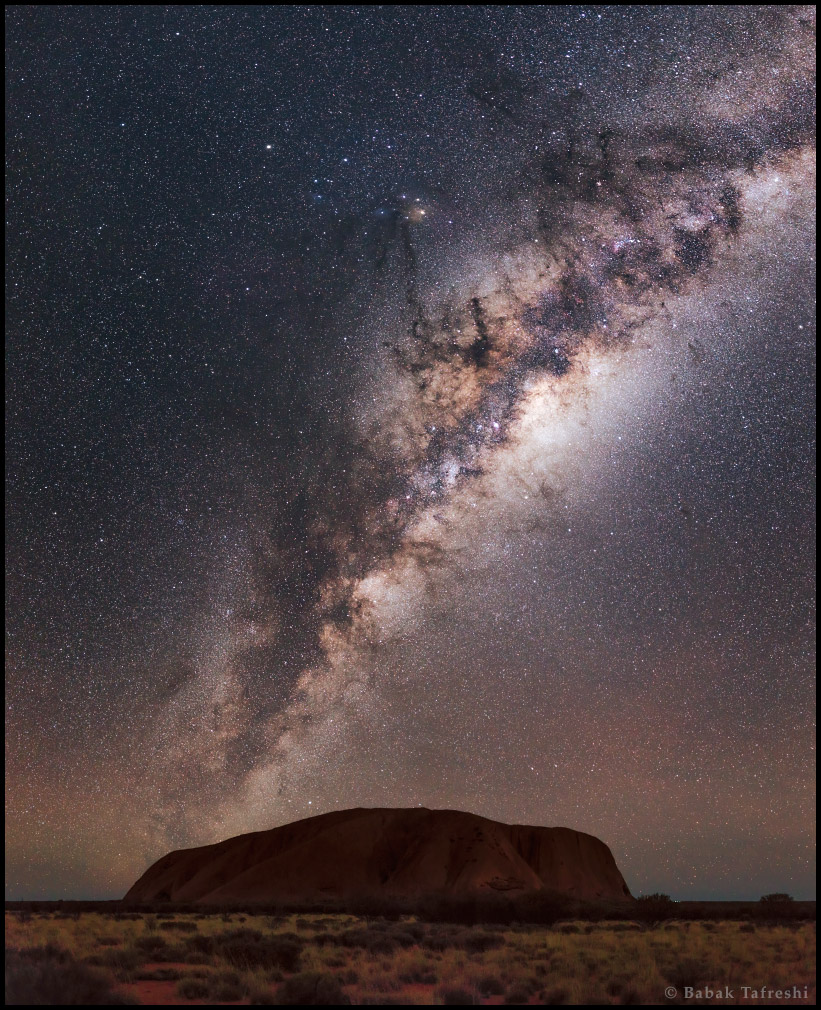
Every day a fun new picture!
Featured Topics
Extrasolar Planets:
The words extrasolar or exosolar literally mean outside our solar system.
As you know, we live on a planet called Earth which orbits a star we call the sun. Together, the sun and the eight planets that orbit it are called our solar system.
Scientists know our solar system formed when a cloud of atoms and molecules in outer space were brought together because of the gravitational force. This cloud collapsed into a disk, called the protoplanetary disk. Then, clumps of matter in the disk were attracted to each other because of gravity--eventually forming the sun in the center with the planets surrounding it. Thus, to summarize, all you need to make a solar system is matter in outer space, gravity and a lot of time.
For thousands of years, humans have known there are many, many stars in the sky. We know this because they give off light and energy and so we can see them in the night sky. The current estimate of the number of stars in the universe is 100 billion. Presumably each of these stars formed when a cloud of atoms and molecules in outer space were brought together because of gravity. Thus, it is theoretically possible that each of these stars has its own solar system of orbiting planets. In other words, it is theoretically possible that billions of exoplanets exist.
Scientists decided to look for these exoplanets many years ago. Unfortunately, it is much more difficult to detect a planet than a star, because planets do not give off light.
We can see the planets in our solar system because they're relatively close and they reflect the light of our sun.
There are two main methods of detecting exoplanets: radial velocity and transit photometry. Most confirmed exoplanets have been found using these methods.
Transit photometry detects exoplanets by measuring the tiny decrease in light as a planet passes in front of a star, blocking its light. If such dimming is measured at regular intervals and lasts for a fixed period of time, scientists infer an exoplanet is there orbiting the star.
There are two additional methods of detecting exoplanets: gravitational microlensing and direct imaging.
Direct imaging is exactly what it sounds like: taking a picture of an exoplanet. This method only works for exoplanets that are close enough to take a picture of, and at the same time, block the light from the star it orbits.
As of early 2018, approximately 3600 exoplanets have been confirmed, with approximately another 4900 candidates yet to be confirmed.
The next great mystery is: do any of these exoplanets harbor life? We're still investigating...
What about visiting some of these exoplanets to check them out for ourselves? Sadly, the speed of light makes this impossible.
Radial Velocity uses the idea that a star moves a little bit when a planet orbits it because of the gravitational pull of the planet. Hence, this method is also called the wobble method. This tiny movement, or wobble, is detectable in the light given off by the star. Light actually has a range of energies which scientists call different wavelengths. This range of light wavelengths is also called a spectrum and the wavelengths correspond to different colors. When a star is moving towards an observer, its spectrum appears slightly more energetic, or more blue. When a star moves away from an observer, its spectrum appears less energetic, or more red. Thus, the radial velocity method looks for star spectra that have regular patterns of blue-shift and then red-shift and so on. Scientists can then infer a planet orbits this star.
Gravitational microlensing uses Einstein's theory of General Relativity to find exoplanets. General Relativity says gravity bends spacetime itself and thus makes light rays bend. Microlensing works when two stars are aligned in a straight line from Earth. The light from the farther star is bent by the closer star in a particular way. When the closer star has an exoplanet, the planet's gravity bends the light and temporarily produces a third image of the farther star. This third image appears as an increase in the far starŐs brightness. Scientists can detect this temporary brightness spike and know it points to the existence of an exoplanet.
